In 1928, President Coolidge signed an act approved by Congress called the Boulder Canyon Project Act. This act became part of the “Law of the River” which is a large collection of rules regulating almost all aspects of the Colorado River. What exactly is the Boulder Canyon Project Act of 1928 and why does it matter?
The Law of the River continues to evolve to this day. Water rights are fiercely protected in the western United States and most settlements are based around the availability of water. The western United States is hot and dry with almost no natural water sources.
What did the Boulder Canyon Project Act of 1928 do that mattered for the Colorado River? We’ll take a closer look at what this act is and why it matters now.
What is the Boulder Canyon Project Act of 1928?
The Boulder Canyon Project Act is legislation that approved the construction on the Colorado River of the All-American Canal and the Hoover Dam. It gave the Secretary of the Interior authorization to spend $165 million to build a dam that controlled floods, made navigating the river easier, regulated the water and land in and around the river, and addressed needed hydroelectricity generation.
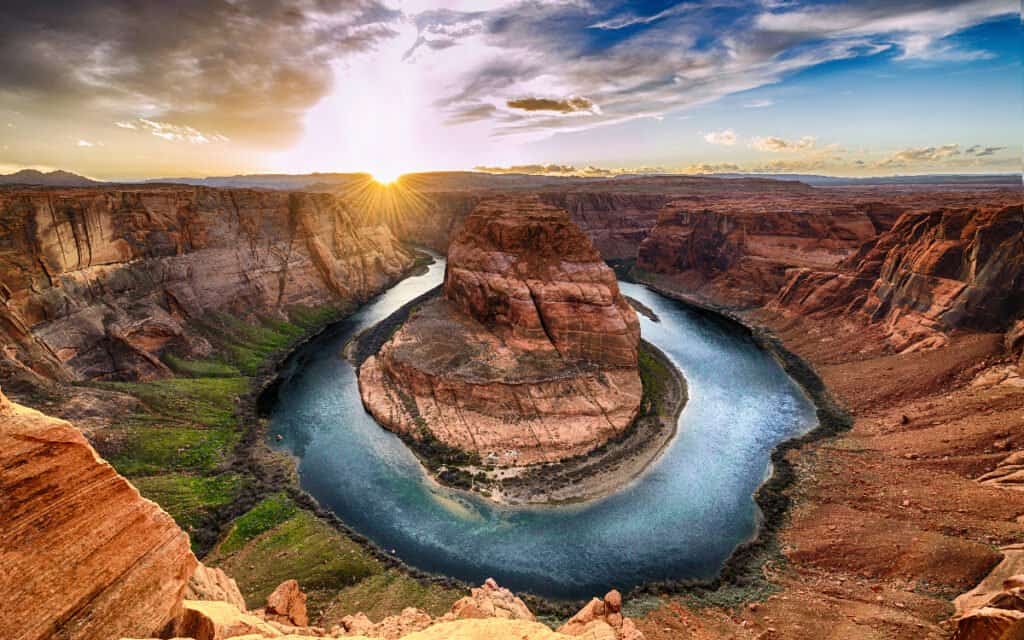
The Boulder Canyon Project Act of 1928 matters because it authorized the construction of Hoover Dam and made the
Colorado River Compact of 1922
official law.
©Wisanu Boonrawd/Shutterstock.com
Why Does the Boulder Canyon Project Act of 1928 Matter?
The Boulder Canyon Project Act of 1928 matters because it authorized the construction of Hoover Dam and made the Colorado River Compact of 1922 official law. This project would create electricity to meet the quickly growing demand in the southwestern United States. Flood control in California and increased ease of navigation were also driving forces of the 1928 act.
A consensus regarding the Boulder Canyon Project Act was hard to obtain. During the 1920s, this act was presented to congress during each of their sessions. It took years for the act to finally pass and the reason it did is that only six of the seven states involved needed to ratify it.
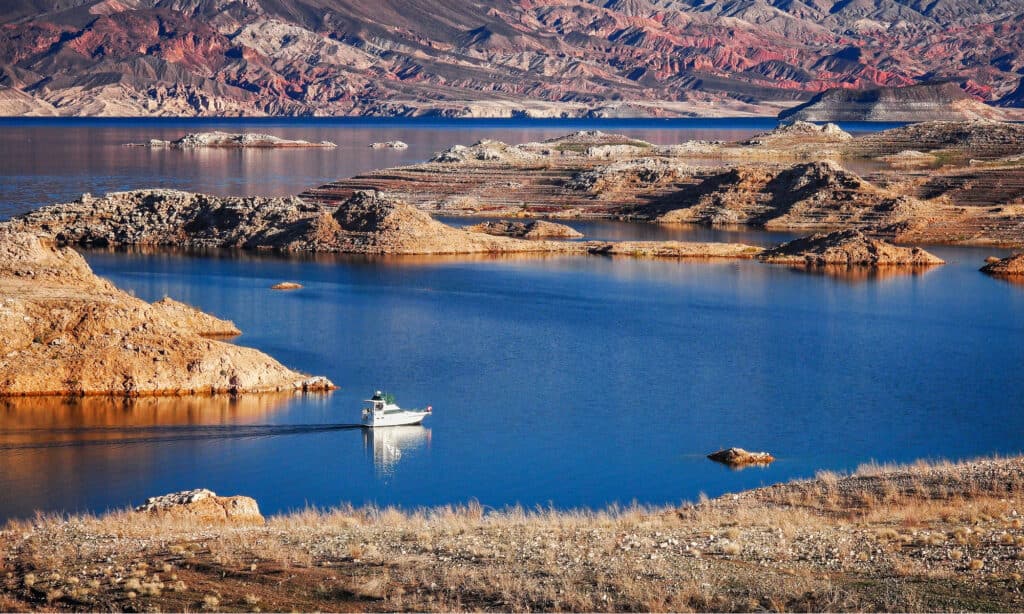
The Hoover Dam is a dam in Boulder Canyon on the border of Arizona and
Nevada
. The water it contains creates
Lake Mead
on the Colorado River.
©CrackerClips Stock Media/Shutterstock.com
What are the Hoover Dam and Lake Mead?
The Hoover Dam is a dam in Boulder Canyon on the border of Arizona and Nevada. The water it contains creates Lake Mead on the Colorado River. The dam was finished in 1935 and it began generating electricity for the Lower Basin states in 1937.
Hoover Dam is currently the third biggest dam made of concrete in the USA. It creates Lake Mead which is the largest artificial reservoir in the country. This dam was the first major dam built on the Colorado River.
President Hoover had a heavy hand in the creation of the dam described in the Boulder Canyon Project Act. Previously called the Boulder Dam, congress passed legislation in 1947 officially giving the dam its current name.
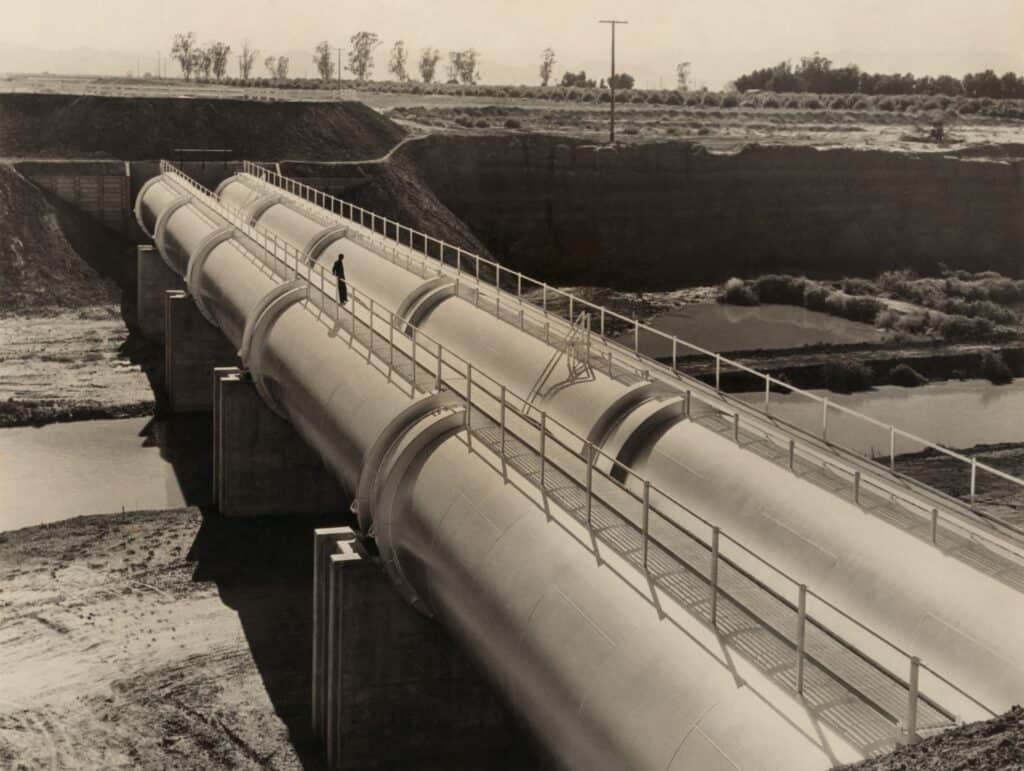
The All-American Canal currently
supplies water
to nine cities and supports local agriculture.
©Everett Collection/Shutterstock.com
What is the All-American Canal?
The All-American Canal is a canal created by the Boulder Canyon Project Act of 1928. This canal delivers water to the Imperial Valley in California which originates from the Colorado River. The All-American Canal currently supplies water to nine cities and supports local agriculture.
The canal is around 80 miles long and it’s the longest irrigation canal on earth. It originates from the Imperial Division Dam and it’s located northeast of Yuma, AZ.
The canal travels south before following the Mexican border to its final destination. It currently ends in an area maintained by the Imperial Irrigation District.
Once the water from the Colorado River makes it to Imperial Division Dam, it is diverted into a handful of other canals. These other canals are the Westside Main Canal, the East Highline Canal, the Central Main Canal, and the Coachella Canal. The All-American Canal is responsible for creating a small amount of hydroelectric power.
The All-American Canal is also rooted in international water rights. Before the construction of this canal, the water for the Imperial Valley came from Mexico. The creation of the All-America Canal allowed the United States to maintain water rights over water diverted from the Colorado River.
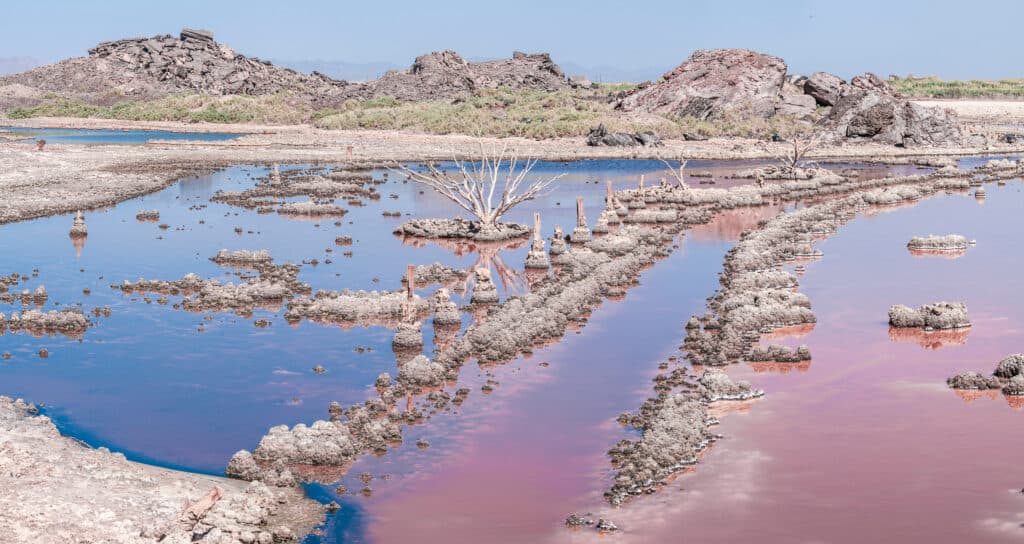
The Imperial Valley in California is extremely dry. It has no natural rivers and needed water diverted to the region.
©Nick Pecker/Shutterstock.com
Why is a Canal Different From a River?
A canal is different from a river because it is made by humans while a river occurs naturally. Rivers exist whether humans are present whereas canals strictly serve human endeavors.
The Imperial Valley in California is extremely dry. It has no natural rivers and needed water diverted to the region. Canals are well-controlled by dams and levees and usually don’t flood. Rivers are subject to flooding even if proper measures are in place.
The St. Francis Dam Disaster in 1928 and the Boulder Canyon Project Act
On March 12, 1928, St. Francis Dam in Los Angeles County catastrophically failed. The resultant flood waters killed over 400 people. The dam was finished in 1926.
The last passed dam inspection was conducted twelve hours before the failure despite visible cracks in vitally important concrete. It’s believed that the immediate and total dam failure sent a 140-foot surge of water down the San Francisquito Canyon. By the time the flood waters traveled and flattened in a region south of Ventura, they were 2 miles wide.
Congress was prepared to pass the Boulder Canyon Project Act in March, but this disaster pushed the passage until December 1928. A provision was added to the Boulder Canyon Project Act in light of the recent dam failure.
California dams were analyzed in detail to assure their safety because of the St. Francis Dam Disaster. To mirror this effort, the plans for Hoover Dam were scrutinized by a newly formed committee called the Colorado River Board. This new board made a variety of important recommendations to Congress in 1928.
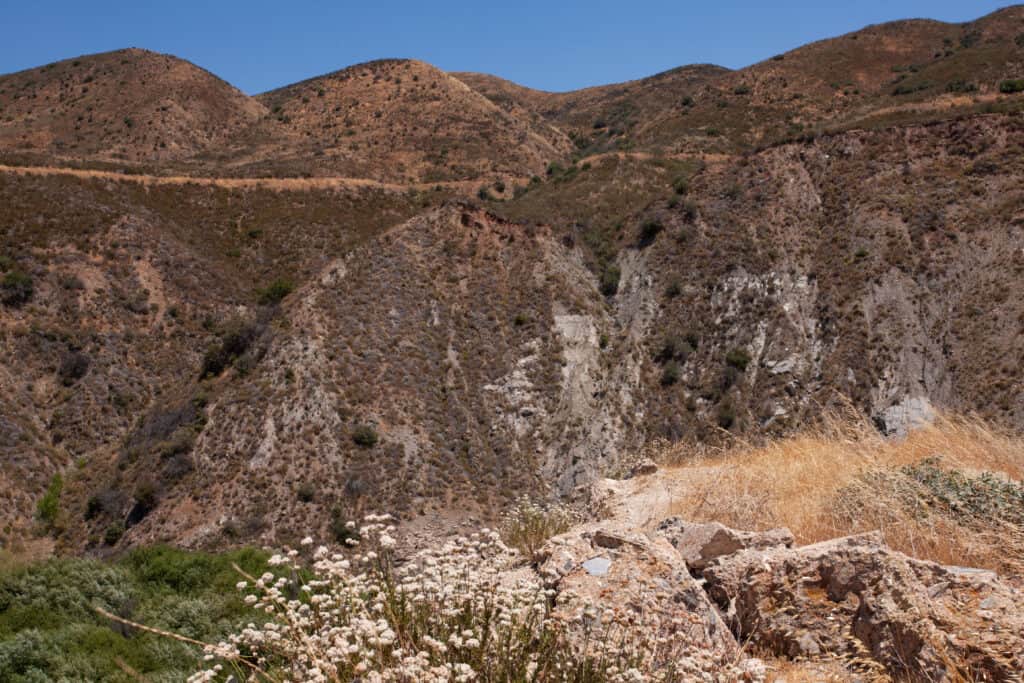
Shot from vantage point of where St Francis dam once stood before the disaster in California. You can see the small road that went along the edge of the water.
©Helmut Fig Newton/Shutterstock.com
Arizona and the Boulder Canyon Project Act of 1928
Arizona is the only state that wouldn’t ratify the Boulder Canyon Project Act. For 40 years, Arizona raged against the Boulder Canyon Project Act until a decision was made in 1963. In 1963, Arizona had to accept that the Boulder Canyon Project Act is legitimate.
Arizona was worried that California would hog all of the water and it wasn’t happy with the original provisions in the 1928 act. 40 years of arguments ensued and eventually, specific water amounts were agreed upon in 1963 ending the conflict. It was also determined in Arizona vs. California in 1963 that California must supply Mexico with water out of its allotment.
The photo featured at the top of this post is © iStock.com/Sean Pavone
FAQs (Frequently Asked Questions)
What is the Boulder Canyon Project Act?
The Boulder Canyon Project Act is legislation that approved the construction on the Colorado River of the All-American Canal and the Hoover Dam.
What is the All-American Canal?
The All-American Canal is a canal created by the Boulder Canyon Project Act of 1928. This canal delivers water to the Imperial Valley in California which originates from the Colorado River. The All-American Canal currently supplies water to nine cities and supports local agriculture.
What is the difference between a canal and a river?
A canal is different from a river because it is made by humans while a river occurs naturally. Rivers exist whether humans are present whereas canals strictly serve human endeavors.
Thank you for reading! Have some feedback for us? Contact the AZ Animals editorial team.






